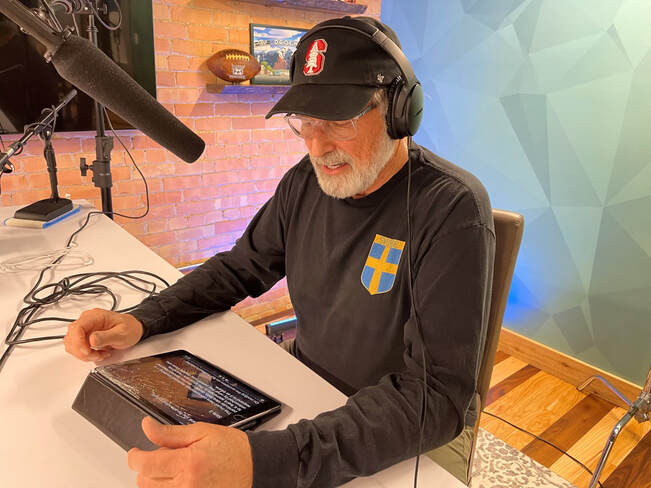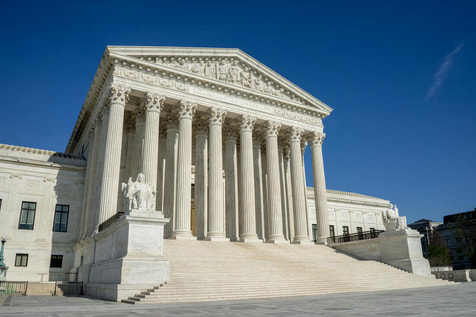|
The 10th Circuit Court of Appeals has ruled against the UTGOP 2-1 Under our Constitutional Republic, the people of Utah elect representatives to govern their affairs. In order for the people to decide who governs their affairs, elections must be held. The Constitution grants states the right to prescribe the “times, places and manner of holding elections for Senators and Representatives” …and the Supreme Court has held that states enjoy similar authority to regulate their own elections. It is not uncommon for regulations enacted to run elections to impose some burden upon individual voters and/or political parties. When they do, and the burden of these regulations infringe on the constitutional rights of the individual or the party, the interests of the state with respect to any election regulations must be balanced against an individual and/or institution’s constitutional rights... The UTGOP argues Utah’s recent reforms under SB54 violate its First Amendment associational rights. Utah’s Lieutenant Governor contends Utah’s legislation is well within the state’s regulatory power over elections. Both sides employ a constitutional base for their arguments requiring judicial review.
Because our constitutional rights are inalienable (granted by God) and states’ rights were granted by the constitution, the state’s rights come second unless an overwhelming state interest can be demonstrated… if any state action appears to violate constitutional rights, the burden of proof is on the state to prove to the court why it’s OK to violate those rights. These are the battle lines drawn between the UTGOP and the State of Utah. Background Before Utah passed legislation known as Senate Bill 54 in 2014, Utah election law gave political parties freedom to choose how they would nominate candidates for the general election. Parties could choose whether or not to use the state’s primary election mechanism or not. With that freedom, the Utah Republican Party chose not to use the primary as its principal means of selecting candidates. Instead, the Party had, and continues to employ, a carefully crafted convention process. Party members in defined precincts conduct neighborhood caucus meetings. In accordance with the Republican Party’s bylaws, each caucus meeting is open to the public and begins with a prayer, a recitation of the pledge of allegiance, and a reading of the Party’s platform. The caucus attendees in turn select community representatives to serve as delegates to the Party’s convention, where nominees will eventually be considered and selected for the ballot. The Party’s nominating conventions are also open to the public. After candidates or their representatives make nomination speeches, delegates cast their votes for candidates to each office. The UTGOP claims it has developed this convention-based nomination process over the years to ensure the selection of nominees who will best represent the Party’s platform. The UTGOP’s candidate qualification requirements, like its nomination procedures, are designed to make certain that nominees are committed to the Party’s platform. All candidates must file a statement certifying that they do not hold a position in any other political party. They must also certify they have read the Party’s platform and accept it as the standard by which their performance as an officeholder will be evaluated. As an additional security measure against the possibility of unfaithful nominees, the Party’s bylaws require nominees to certify they will abide by the Party’s nomination procedures. These procedures do not allow for any method to gain the nomination other than competition in the Party’s convention. SB54, enacted in 2014, completely overhauled the requirements political parties must meet to have their nominees placed on Utah’s general election ballot. No longer are political parties in Utah free to select their nomination procedures. In 2015, the UTGOP filed suit against Utah’s Lieutenant Governor to enjoin the law’s application to the Party. In early 2016, the Party again filed suit, arguing, among other things, that SB54 was unconstitutional as applied to the Party because it (1) required the Party to participate in a primary election; and (2) required the Party to accept candidates who gathered signatures, in violation of its bylaws. The Utah Supreme Court agreed with the Lieutenant Governor that SB54 requires the Party to allow members to become nominees by collecting signatures. The court claimed the burden these provisions placed on the UTGOP associational rights was not severe and that the state’s interests were substantial enough to justify what little burden existed. The UTGOP appealed. The UTGOP believes Utah’s interference in its nomination process is unconstitutional and the Chief Justice of the 10th Circuit Court agrees. Analysis The election context is like so many areas covered by the First Amendment…one of competing rights. And like many situations in which two constitutional principles come head-to-head, the touchstone of a court’s analysis is balancing the competing rights. According to case law, a political party has a First Amendment right to limit its membership as it wishes, and to choose a candidate-selection process that will in its view produce the nominee who best represents its political platform. This makes sense, as the nomination process is one that “often determines the party’s positions on the most significant public policy issues of the day, and even when those positions are predetermined it is the nominee who becomes the party’s ambassador to the general electorate in winning it over to the party’s views.” At the same time, the Constitution explicitly grants states power to select the times, places and manner of holding Elections. Evaluations of First Amendment challenges to state election laws, attempts to account for these dueling interests. Consideration must be given to the character and magnitude of the asserted injury to the rights protected by the First and Fourteenth Amendments that the UTGOP seeks to vindicate. In balancing these considerations, “the rigorousness of our inquiry into the propriety of a state election law depends upon the extent to which a challenged regulation burdens First and Fourteenth Amendment rights.” If, a regulation is found to impose severe burdens on a Political Party’s constitutional rights, it must be narrowly tailored to serve a compelling state interest. However, when regulations impose lesser burdens, “a State’s important regulatory interests will usually be enough to justify reasonable, nondiscriminatory restrictions.” When the UTGOP announced that it would permit nomination by caucus/convention only, it was guarding its nomination process to ensure only candidates that embrace its platform made the ballot. The UTGOP’s justification for doing so was that it interpreted SB54 as offering the political party (rather than the candidates) the option to allow nomination by either the signature gathering method, or the convention method, or both. However, Utah’s Lieutenant Governor responded that it was the State’s position that under SB54 it is the party member’s choice, not the party’s, whether to pursue the nomination using the signature gathering method, the convention method, or both. This is where we lost the 2-1 decision by the 10th Circuit Court. The UTGOP believed this decision by the Lieutenant Governor was an intrusion on the Party’s ability to name its own candidates. We failed to show real damages by SB54 to our party membership because we proceeded with a hypothetical case… Federal courts can only interpret the law in the context of deciding a dispute. A court will rarely approach an issue in a hypothetical context. Why? Because a hypothetical case has hypothetical damages, and the courts will almost always give consideration to the status quo rather than rule on a hypothetical question. Case law is on our side if we can show real damages or what the court refers to as “asserted injury.” In order to understand what constitutes a burden, one must understand what person or identity is burdened. According to the state of Utah and the Utah Supreme Court (upheld by the 10th Circuit) the burden to be measured by state law in this case is against voters of the Republican Party rather than the UTGOP itself. Under this view, it is easy to see how the court made its decision. By identifying the registered voters as the burdened class, the court reasoned that regardless of the primary process of how candidates make the ballot, the voting members of the UTGOP still had an opportunity to vote for the candidate of their choice on the ballot. Therefore, in the eyes of the court, the burden of how candidates make the ballot matters less than whether the ballot contains Republican candidates to be voted on by its members. Because the voters had Republican candidates to vote for…in the courts eyes there was no damaged party When a court is considering a challenge to a state election law, it must weigh “the character and magnitude of the asserted injury” to the rights protected by the First and Fourteenth Amendments. By selecting the voting public as the affected class rather than the Party membership, the courts could not identify, to the extent it would overrule the state’s interest in running elections, “the character and magnitude of the asserted injury” to the UTGOP. Therefore the 10th Circuit concluded, 2-1, that the UTGOP’s claims were not “ripe for review” ...meaning, the UTGOP failed to demonstrate “asserted injury.” Our case was hypothetical…and as I mentioned above, it is impossible to ask the court to find “asserted injury” in a hypothetical situation. For example, when the Chief Justice of the 10th Circuit Court in oral arguments asked the lawyer for the state of Utah, if Bernie Sanders came to Utah, gathered enough signatures to make the ballot, and declared himself a Republican, he could run as a Republican and the Party could do nothing about it? …the lawyer answered yes. While this makes our case for our constitutional rights of association as to membership in our Party, there was no Bernie Sanders, so there was no “asserted injury” to the Party. When courts are balancing constitutional rights, “asserted injury” or damages must be presented. Courts are very careful to establish legal doctrine on hypothetical cases. So, what do we do now? According to existing case law, a political party has a First Amendment right to limit its membership as it wishes, and to choose a candidate-selection process that will in its view produce the nominee who best represents its political platform. Indeed, the First Amendment affords “special protection” to “the process by which a political party selects a standard bearer who best represents the party’s ideologies and preferences.” And this makes sense, as the nomination process is one that “often determines the party’s positions on the most significant public policy issues of the day, and even when those positions are predetermined it is the nominee who becomes the party’s ambassador to the general electorate in winning it over to the party’s views.” Put more simply, if the burden on a Party’s rights is severe, the state must have compelling interests in the regulation and the regulation must be narrowly drawn to protect those interests. In sum, then, Senate Bill 54 interferes with the Party’s internal procedures, changes the kinds of nominees the Party produces, allows unwanted candidates to obtain the Party nomination, causes divisiveness within the Party, and reduces the loyalty of candidates to the Party’s policies. We must protect our constitutional rights by demonstrating to the courts an “asserted injury” to our Party by implementation of SB54. While the Party has made the by-law changes necessary to move this case forward, our winning case reasoning lies in the dissent by Chief Justice Tymkovich of the 10th Court of Appeals. You can find his dissent in the link provided below. It starts on page 49. https://www.documentcloud.org/documents/4416051-10th-Circuit-SB54-ruling.html#document/p52
0 Comments
Your comment will be posted after it is approved.
Leave a Reply. |
AuthorBill Olson Archives
April 2024
Categories
All
|



 RSS Feed
RSS Feed
